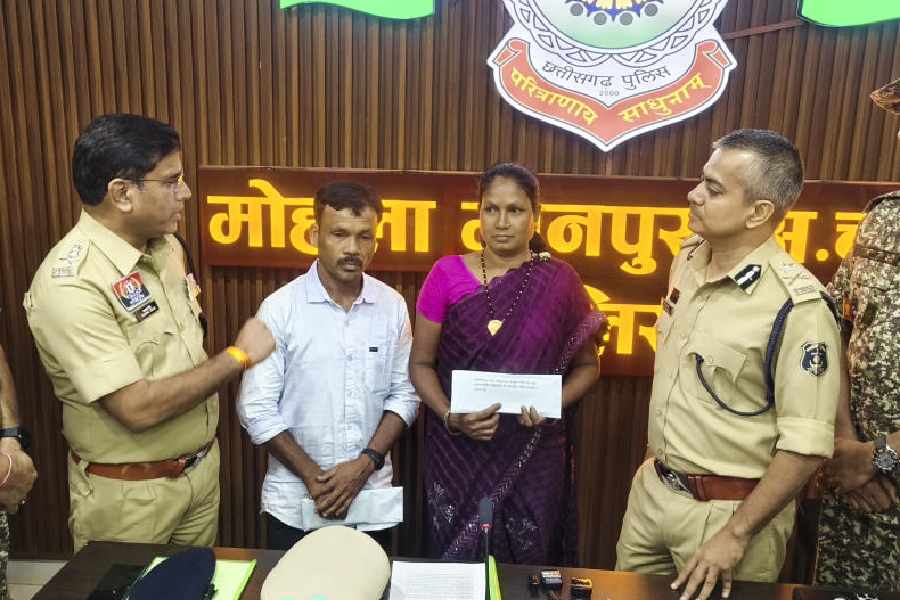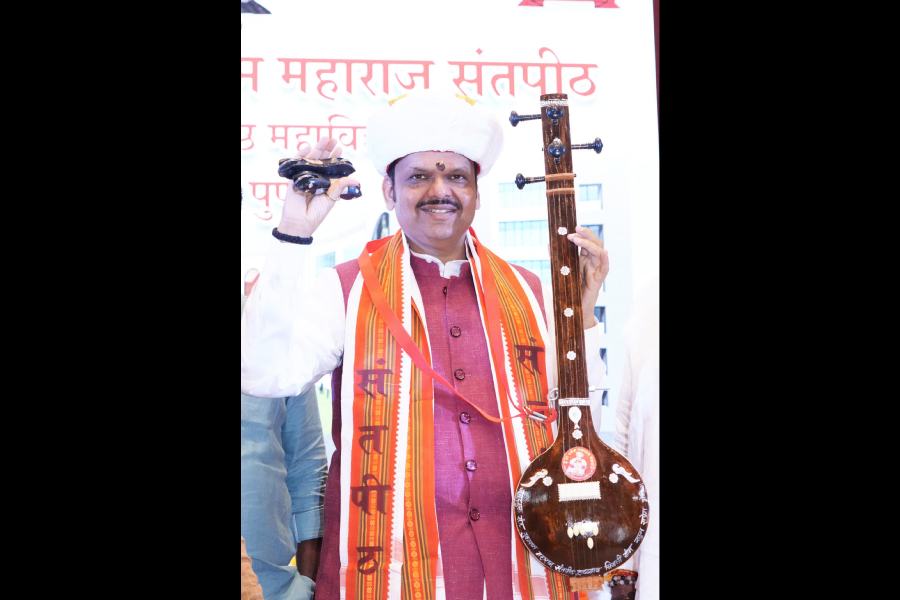 |
| A Manbhum Chhau performance in Ranchi. Telegraph picture |
Ranchi, June 11: Sudesh Mahto is no longer minister but his erstwhile art and culture department is going ahead with plans to set up a chhau academy at his hometown of Silli to promote the lesser known Manbhum variety of the dance form that has its roots in the region.
The Manbhum Chhau Centre, which was cleared by the state Cabinet in March, aims to promote the local version of Chhau that has remained largely ignored while its Seraikela counterpart has managed to get national and even global recognition.
The budget for the project is yet to be finalised but the state has already formed an eight-member committee that has convened a meeting on June 21 to set the ball rolling.
“We have already started selecting children mostly from the Manbhum area based on their interest in music,” said Kumar Anand, the secretary of the centre, adding that they proposed to train children — between 8 and 15 years — as well as youths — between 16 and 25 years — for a year’s duration.
“We have decided to offer a monthly stipend of Rs 400 to trainees,” he said but wasn’t quite sure when the centre would start functioning.
Anand said that in all, the state had sanctioned 17 posts for the centre. “The first step is to buy instruments, costumes and get hold of local artists who are experts in the Manbhum Chhau dance form. They will act as trainers,” he said.
Silli was chosen as the location as it is very close to Purulia in Bengal where the dance form originated. People of the area, the Manbhum region bordering Jharkhand, still practice the dance form but unfortunately it hasn’t got the wide recognition as the Seraikela school in which the masks are the centre of attraction.
If elements of speech are absent in the Seraikela form, Manbhum Chhau generously uses folk music using traditional instruments like the nagra and dhol. The masks are based on mythological characters.
According to Anand, the art and culture department is now toying with the idea of introducing changes in the Manbhum form by including contemporary themes centred around social issues.










